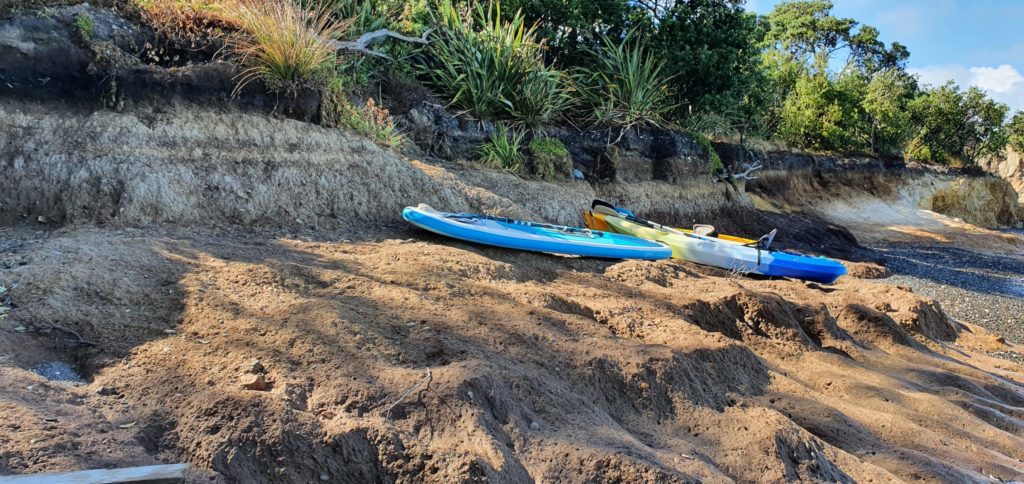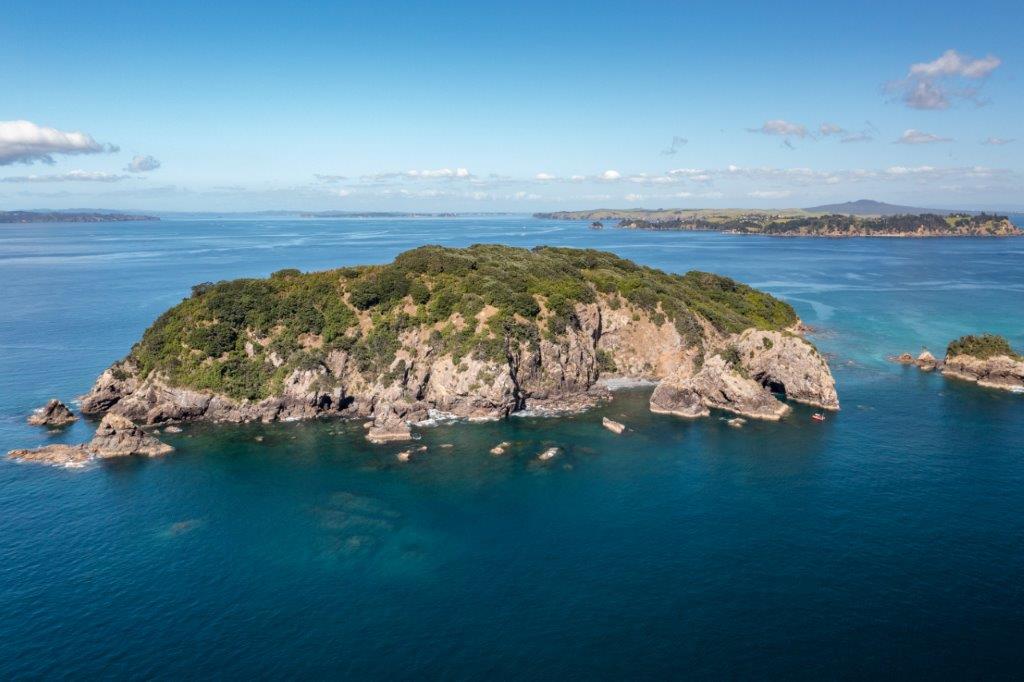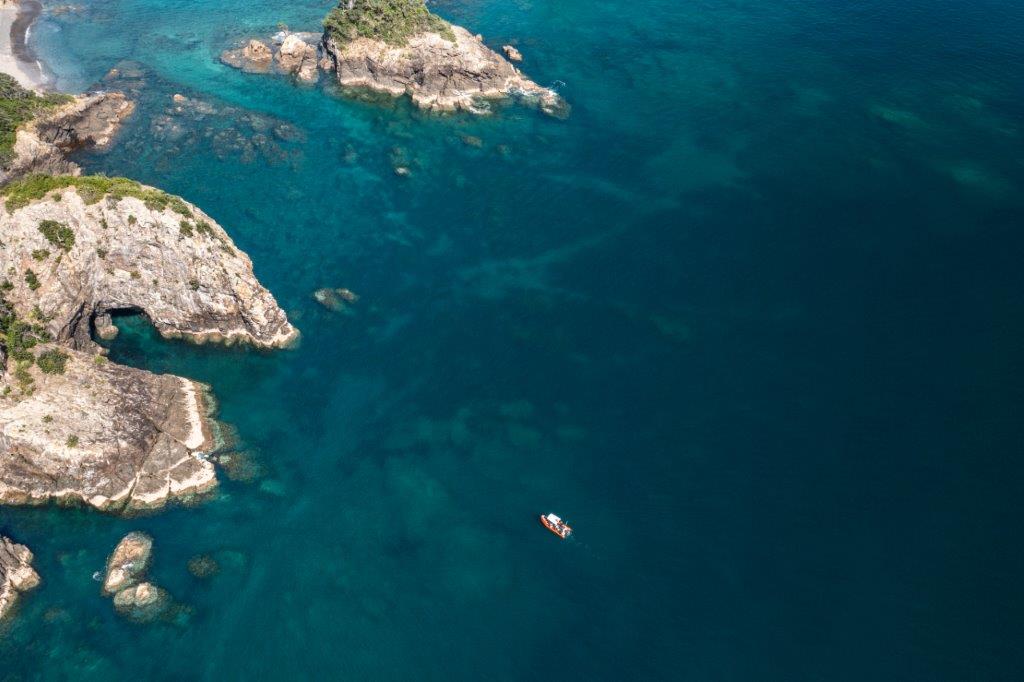The Noises hold a very special interest for seabird lovers. Being home to at least…
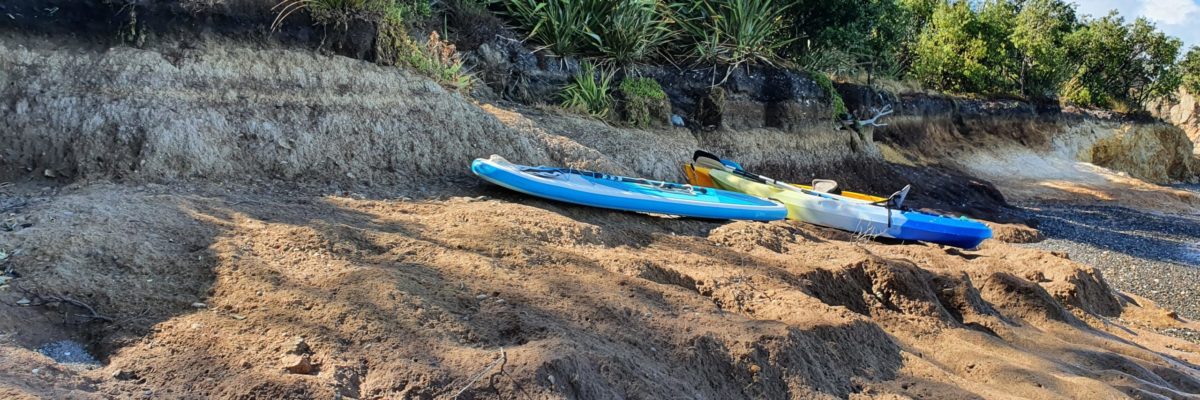
Increased coastal erosion is wearing us down
It’s not as if we need additional reasons to push for marine protection, nevertheless, here’s another compelling argument for ocean conservation – because a healthy ocean can help combat coastal erosion.
Scientists have long been aware that a generous covering of kelp in the subtidal zone can help mitigate coastal erosion by acting as a buffer. On Ōtata for example, the Neureuter whānau have witnessed significant changes to the main beach over their lifetimes. What’s more, in the last decade the damage has been occurring at an ever more alarming rate. The shores are hammered by more frequent storms, high winds and sea surges, and that damage is exacerbated by the loss of kelp forests and the proliferation of kina barrens.
Sue Neureuter has been documenting change to the islands’ landscape for some years, and in January 2018 when erosion of the coast started to speed up exponentially, Sue took some illuminating videos.
“Things have changed significantly even in the last four years,” Sue explains, “and these images make a compelling visual story. When you compare what’s happening on the main beach to Bullymore Bay and Blinking Eye Bay where there are more abundant offshore kelp forests, you can see how those kelp zones serve to act as a buffer to the foreshore.”
This degradation is not confined to The Noises either, and what’s happening to parts of the foreshore on Ōtata is an indication of what’s happening in coastal communities everywhere, which is why it is vital to build marine ecosystem resilience through protection.
Harking back to childhood, Sue remembers when she, Rod and Zoe could walk along the main beach and investigate the middens. “The bank was at my eye level and it extended metres and metres further out than it does today. The islands have always been washing away but not at the pace they are now.”
Sue estimates it was about 2010 when things started to deteriorate more noticeably. “There was a big storm that year, and the bank suffered significant erosion. Then it remained more stable until 2018 when there were two massive storm events a month apart. These were of a magnitude that hasn’t been seen in 90 years and came from the northwest, moving all the shingle off the main beach to other areas where much of it remains today.”
As for this summer’s destructive weather, various storm events led to heavy clay balls rolling off the banks. “They look like pebbles. You can see the erosion in front of your eyes and it’s compounded by the lack of kelp on the western side of the island where there’s nothing to buffer the weather, or soften the blow.”
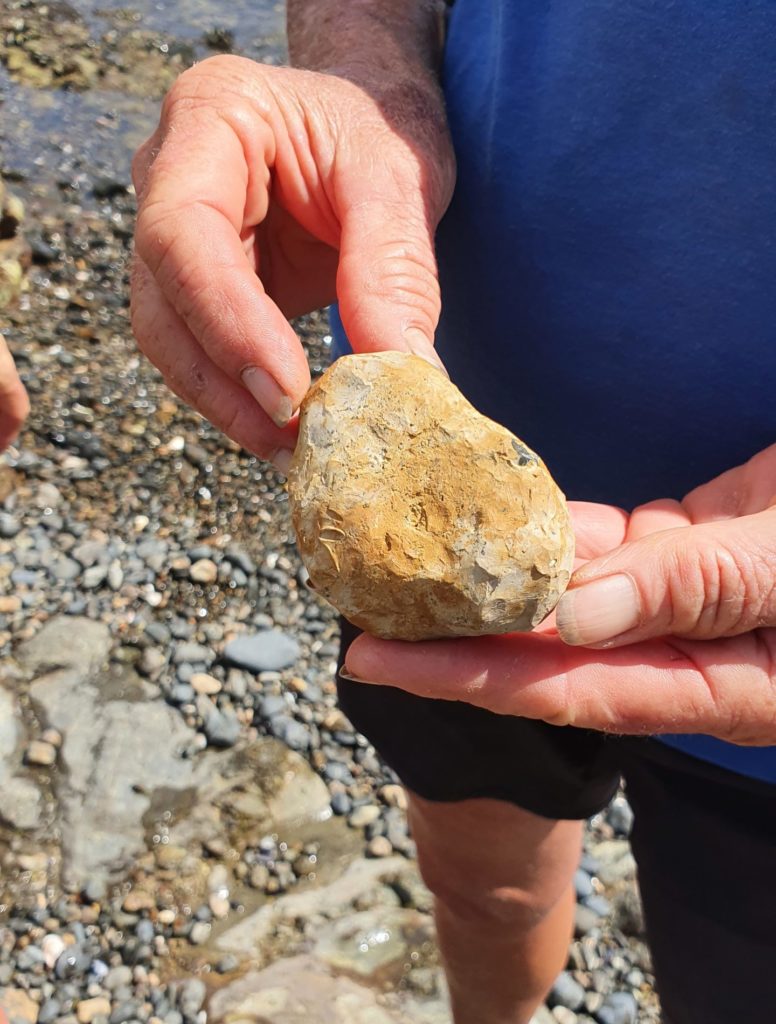
The ongoing loss of the main beach’s historic midden is also of significant concern. That precious library of information contains layers of shells and animal bones that provide information about geology, weather, natural disasters and the day to day life of various species, including the humans who deposited the information in the first place. Emma Ash, Auckland Museum’s Associate Archaeology Curator expressed her concern in an earlier blog. “As the midden continues to erode it is important to retrieve vital information, especially from the pre-Rangitoto occupation, before more is lost.”
Tragically, up to five metres of that midden was lost in the large storms of January 2018 and much more has been destroyed in the four years since.
Sue believes the main beach at Ōtata has already reached a tipping point, and even though some of those lost pebbles will be replaced during the westerlies, the beach will never return to its original height. Nor will it offer a buffering effect to the island, because the clay beneath continues to erode so the layer of pebbles is correspondingly lower. This leaves the clay bank and the middens behind the beach vulnerable to high tide wave action, and so the erosion continues.
“If you have a beach that is exposed to weather, but is also surrounded by kelp,” Sue explains, “that kelp helps absorb the force of the weather and when the kelp breaks off, it forms big rafts of seaweeds that absorb some of the wave energy. Then when it washes up on the beach it acts like a vast sponge. But if there are no seaweeds, the full force of the waves break on bare rock and there’s nothing to soften the impact.“
One of Sue’s videos (below from 17 February 2018) shows where there used to be a seat that looked out over the main beach. Not only is the seat gone, the entire bank has washed away. While we can’t wind the clock back, we can stop it ticking at such high speed through the implementation of marine protection.
It is clear, that to build effective resilience we need robust marine systems wrapped right around the islands and while it may be too late for the main beach on Ōtata, marine protection that restores kelp will help buffer the rest of the islands, reefs and rock stacks not just of The Noises but right across the Hauraki Gulf.
Video taken by Sue Neureuter, 17 February 2018
Video taken by Zoe Neureuter, 13 February 2022
